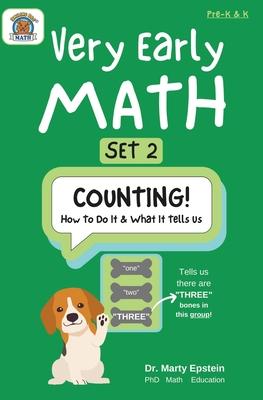- Why we count (i.e., to find out a group's size),
- How counting tells us a group's size,
- How to count.
This matters a lot!
- Arithmetic simply won't make sense to a child who can "count," but who doesn't understand the idea of a group, that numbers tell us the size of a group, and how counting tells us a group's size. That child might think 1 + 2 = 3 means
- Something named "1" (because it happened to be counted first) combined with Something named "2" (because it happened to be counted second) becomes Something named "3?"
- This simply makes no sense! It's not what 1 + 2 = 3 means mathematically.
- What does 1 + 2 = 3 mean mathematically? Here's an example of how it could be used
- A group with 1 apple combined with a group with 2 apples equals a group with 3 apples.
- See how core (please excuse the pun when writing about apples) the idea of a "group" is to mathematics, even the most basic arithmetic? Understanding the idea of a group and how counting tells us the size of a group is a nonnegotiable, critical foundation to math.
- A child who doesn't yet have this understanding may be able to memorize 1 + 2 = 3, for example, but will not understand what 1 + 2 = 3 means. It's a bit like knowing how to pronounce and spell "cat" and "dog" without understanding what they mean.
- It turns out that many adults, caregivers, and early childhood educators assume a child understands the idea of a group and how counting tells us a group's size when the child, in fact, doesn't yet understand these ideas. And it turns out that many approaches we use to help a child learn these key ideas actually don't work as well as we think they do.
